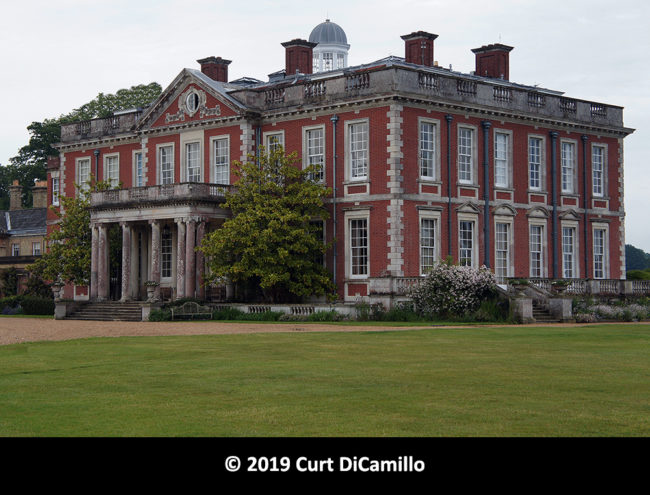
The entrance facade
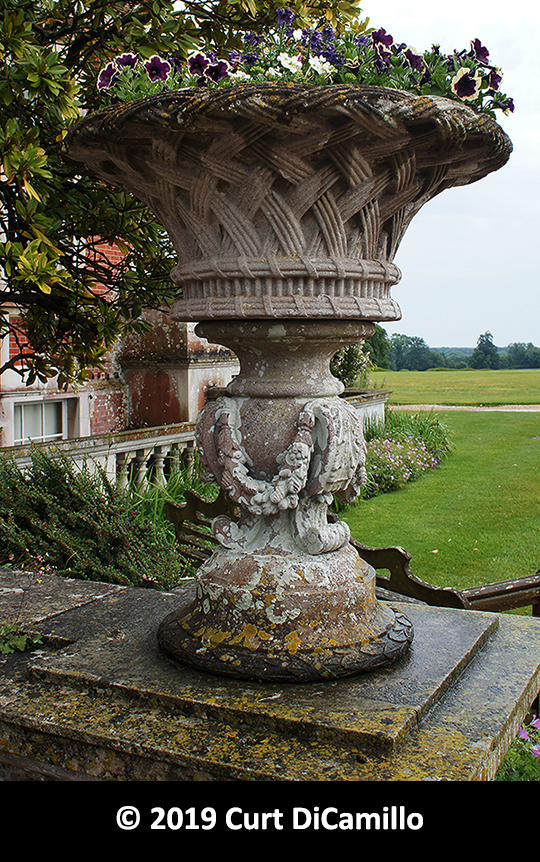
Detail of entrance facade stonework
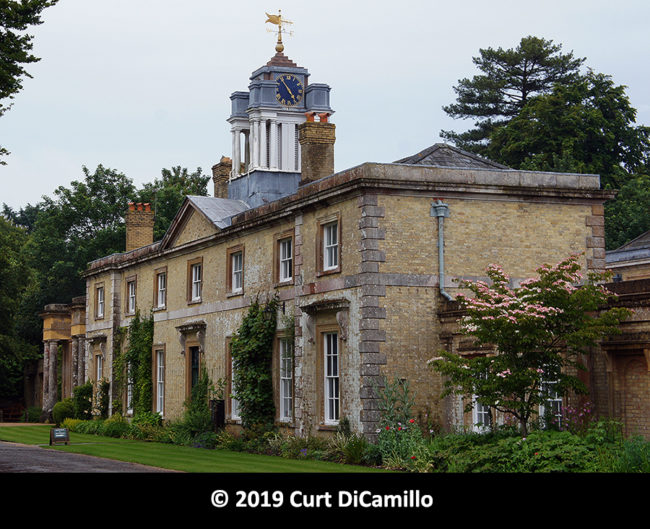
The stables
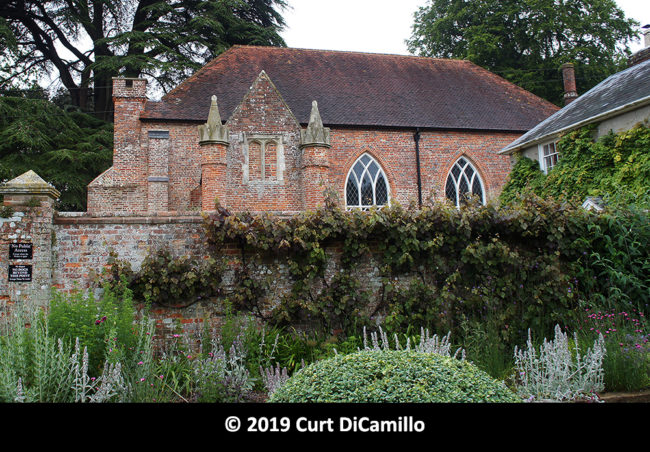
The Chapel of St. Paul
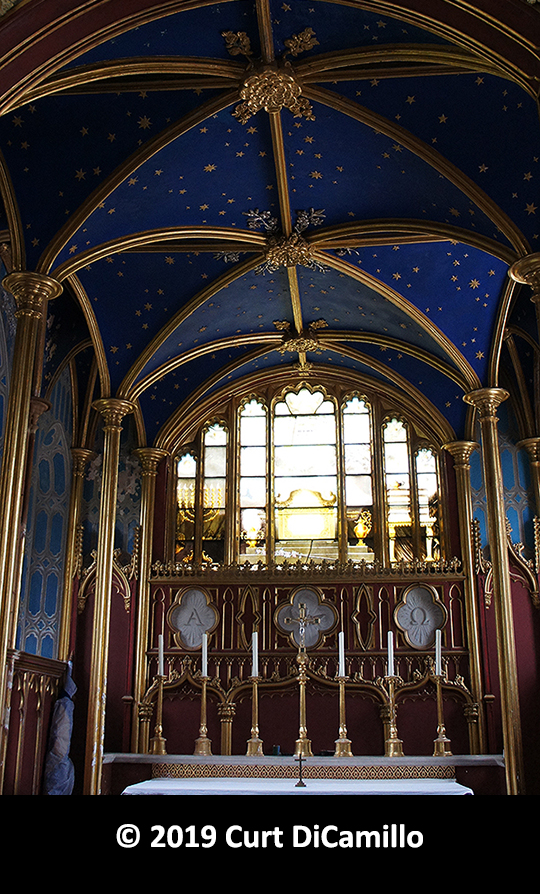
Interior of the Chapel of St. Paul
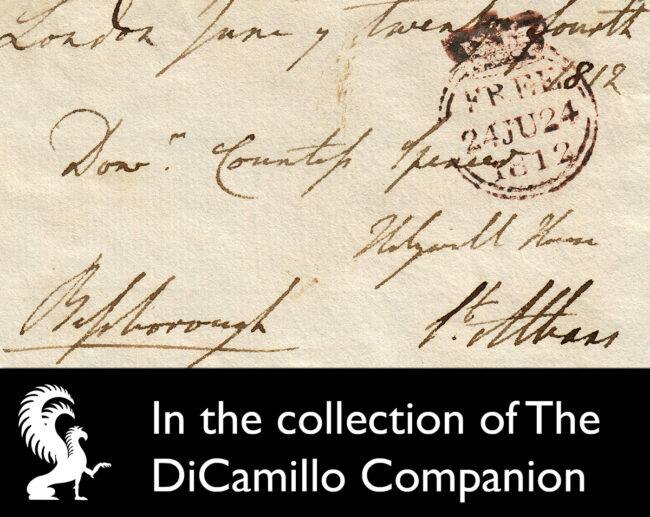
Signature (lower left) of the 4th Earl of Bessborough from an 1812 document
Earlier Houses: Earl Godwin, father of King Harold (the last Anglo-Saxon king of England), had a house here in the 11th century, which was replaced in the 12th century by a hunting lodge built by the earls of Arundel. The early 16th century house, belonging to Lord Lumley, was destroyed by Parliamentary forces in the Civil War. Robert Hooke or William Talman may have designed the new house for the Lumley family in the 1680s. In 1778 the estate was purchased by Richard Barwell, who hired Capability Brown to redesign the park and Joseph Bonomi and James Wyatt to remodel the house and add porticos, 1786-91. This house was destroyed by fire in 1900 and replaced in 1903 by the current house.
House & Family History: In 1804 Stansted was sold to Lewis Way, who attempted to start a college for the conversion of Jews to Christianity on the estate. In the late 19th century, when Stansted was owned by the Wilder family the house was destroyed by fire in 1900 (Stansted was rebuilt in 1903 on the exact footprint of the previous 17th century house). In 1924 the estate was sold to the 9th Earl of Bessborough. The earl moved the majority of his family's collection of furniture and art to Stansted from Bessborough House, the Ponsonby family seat in Co. Kilkenny, which was destroyed by fire in the 1920s during The Troubles. The earls of Bessborough come from the Ponsonby family of Cumbria. Sir John Ponsonby served Cromwell in Ireland in the 1650s and was granted land there. The 3rd Earl (1758-1844) was the husband of Harriet Spencer, sister of the famous Georgiana, Duchess of Devonshire. Harriet was the subject of Janet Gleeson's 2006 book "Privilege and Scandal: The Remarkable Life of Harriet Spencer, Sister of Georgiana." The 4th Earl of Bessborough (1781-1847; see "Images" section for what is believed to be the 4th Earl's signature) was the first commissioner of works and presided over the rebuilding of the Houses of Parliament in 1832. The 5th Earl (1809-80) was Queen Victoria's master of staghounds, 1848-52, and lord steward of the household from 1868 until 1874. The 5th Earl's brother, Spencer, was comptroller of the Lord Chamberlain's Department from 1857 to 1901. It was his nephew, Sir Henry Ponsonby, who was the powerful private secretary to Queen Victoria. The 9th Earl (1880-1956) was governor-general of Canada, 1931-35. The 10th Earl (1913-93) was minister of science and technology. In 1983 the 10th Earl created the Stansted Park Foundation as a charity to own and preserve the estate and the house and its collections for the benefit of the nation. The history of Stansted Park since the 12th century is told in the 10th Earl's book "The Enchanted Forest," published in 1984.
Collections: Some contents were auctioned by Sotheby's on October 5, 1999, realizing a total of £1.29 million. A circular French Louis XV silver, vari-color gold, and enamel snuffbox with a cover inset with an oval enamel miniature of classical figures with a cornucopia that belonged to Blanche Vere Guest, Countess Bessborough, wife of the 8th Earl, sold for $6,250 (against an estimate $2,000-3,000) at Freeman's, Philadelphia, on May 22, 2014.
Comments: Stansted is frequently called "one of the most beautiful homes in the South."
Garden & Outbuildings: Montagu Dunk, 2nd Earl of Halifax, built the belvedere folly called Racton Tower (aka Racton Monument; see "Images" section) on the West Sussex portion of the Stansted Estate in the 1760s, probably to the designs of Henry Keene. Ruinous since the 19th century, the Grade II-listed folly, also called Stansted Tower and Stansted Castle, is today in separate ownership from the Stansted Estate.
Chapel & Church: The west facade of the Chapel of St. Paul is a remnant of the Tudor house. The east window represents the sanctuary of Solomon's Temple in Jerusalem. The chapel was an inspiration to John Keats.
Architect: Henry Keene
Date: 1760sArchitect: William Talman
Date: 1688Architect: Robert Hooke
Date: 1688Architect: Lancelot Brown
Date: 1780sArchitect: Joseph Bonomi the Elder
Date: 1786-91Architect: Reginald Theodore Blomfield
Date: 1903Architect: James Wyatt
Date: 1786-91Architect: Harry Stuart Goodhart-Rendel
Date: 1923
Title: Sotheby's Auction Catalog: Stansted Park Country House Sale, Oct 5, 1999
Author: NA
Year Published: 1999
Reference: pgs. 6, 7, 10, 11, 12
Publisher: London: Sotheby's
ISBN: NA
Book Type: Softback
Title: Blue Guide: Country Houses of England
Author: Tyack, Geoffrey; Brindle, Steven
Year Published: 1994
Publisher: London: A&C Black (New York: W.W. Norton & Company)
ISBN: 0713637803
Book Type: Softback
House Listed: Grade II*
Park Listed: Grade II*
Current Seat / Home of: Myles Fitzhugh Longfield Ponsonby, 12th Earl of Bessborough; Ponsonby family here since 1924.
Past Seat / Home of: SEATED AT EARLIER HOUSES: Godwin, Earl of Wessex, 11th century. Richard FitzAlan, 8th Earl of Arundel, 13th century. John Lumley, 1st Baron Lumley, 16th century; Richard Lumley, 1st Earl of Scarbrough, 17th-18th centuries. Richard Barwell, 18th century. George Montagu-Dunk, 2nd Earl of Halifax (third creation), 1766-71. Richard Barwell, until 1804. Lewis Way, 19th century. Wilder family, 19th and early 20th centuries. Edward Frederick Lindley Wood, 1st Earl of Halifax (fourth creation), early 20th century. SEATED AT CURRENT HOUSE: Vere Brabazon Ponsonby, 9th Earl of Bessborough, 1924-56; Frederick Edward Neuflize Ponsonby, 10th Earl of Bessborough, 1956-93; Arthur Mountifort Longfield Ponsonby, 11th Earl of Bessborough, 1993-2002.
Current Ownership Type: Charity / Nonprofit
Primary Current Ownership Use: Event Venue
Ownership Details: Owned by Stansted Park Foundation.
House Open to Public: Yes
Phone: 02392-412-265
Fax: 02392-413-773
Email: [email protected]
Website: https://www.stanstedpark.co.uk
Historic Houses Member: Yes